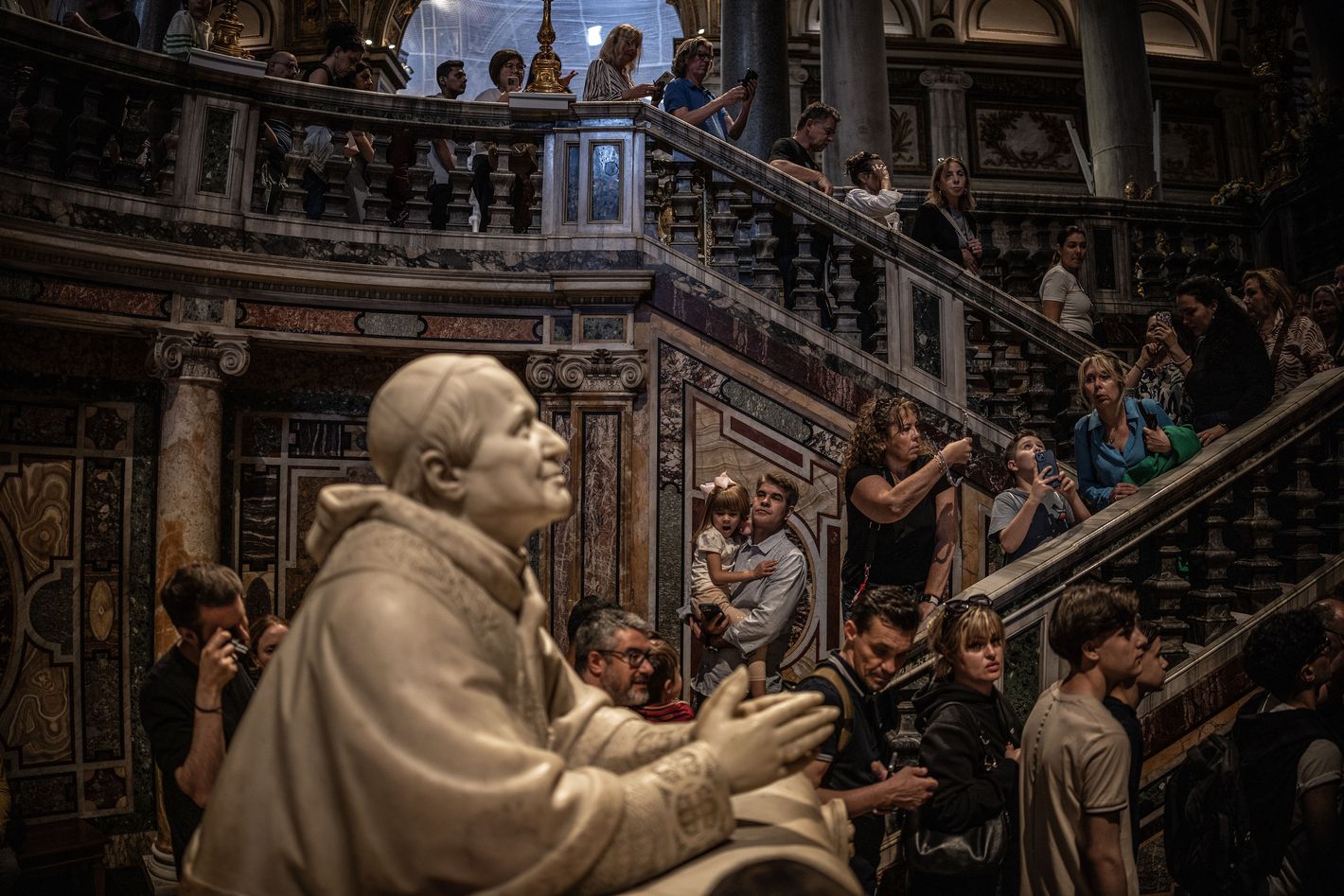Photo: Oliver Weiken/picture alliance/Getty Images
In the recent Hollywood blockbuster movie Conclave, the College of Cardinals’ choice of a new pontiff represented a crucial moment when the Roman Catholic Church might have turned sharply left or right and toward very different visions of an inclusive or an exclusive community. Certainly, this sense of unlimited possibilities heightened the film’s drama — with the spiritual direction of well over a billion adherents up in the air over St. Peter’s Square, where black or white smoke marked the continuation or culmination of the papal election. I won’t spoil the ending for those who haven’t watched the film, but the actual conclave that will soon name a successor to the late Pope Francis is also being billed as a dramatic confrontation between those promoting wildly varying directions for the church.
To be clear, the use of labels like “left and right” or even “progressives and traditionalists” with respect to this ancient institution bound by scripture and tradition and professing guidance from the Holy Spirit as Jesus Christ’s authorized representatives on earth isn’t very precise and may be actually misleading.
For example, it’s often asserted that Francis represented a sharply progressive Vatican left turn that followed the profoundly conservative papacies of John Paul II and Benedict XVI. On some issues, like recognizing a responsibility to minister to LGBTQ+ folk and divorced-and-remarried Catholics despite their marginalized status, Francis was indeed a breath of very fresh air. On others, like accommodation of those wanting to perform or participate in the Latin Mass, he was not so much “progressive” as simply determined to impose unity. On other topics that marked his papacy, like concern over climate change, he got a lot of both positive and negative attention while really just stressing themes his predecessors had earlier addressed. And on the issue that recently brought him into direct conflict with the Trump administration and its holier-than-thou Catholic vice-president, treatment of immigrants and refugees, Francis was articulating long-standing Vatican teachings; in rebuking J.D. Vance, you could say it was the pope, not the recent American convert, who was the “traditionalist.”
More generally, Francis didn’t so much change traditional teachings or practices as he shifted their tone and priority. So a successor could make similar changes in all sorts of different directions. In that sense, the future really is open, and it’s likely the next pope won’t radically disrupt where the church stands today. That’s particularly true of its most pressing challenge: dealing with the horrific fallout from the many long-suppressed incidents of clerical child abuse, which is less a matter of doctrine or ideology than of simple courage and transparency.
But let’s say I’m wrong, and as many of Francis’s critics (particularly in the United States) hope, his successor firmly slams doors tentatively opened by the Argentinian pontiff, making his reign a brief pause in a rightward movement that has characterized Catholicism since the Second Vatican Council of the 1960s. If, for example, someone like Cardinal Peter Erdo, a staunch conservative from Viktor Orbán’s Hungary, became the next pope, conservatives in both church doctrine and in politics might rejoice and push the Vatican even further to the right going forward.
One American progressive Catholic writer, Elizabeth Bruenig, has expressed her own fear that Francis’s successor could reinforce an already powerful trend in American society wherein her fellow progressives are fleeing Christianity and Christianity itself is becoming ever-more conservative:
Over the past decade, most Christian traditions in America have shifted rightward politically: Ryan P. Burge, a political scientist at Eastern Illinois University who studies religion, found that from 2008 to 2018, 27 out of 34 Christian traditions surveyed became more conservative, judging by changes in congregants’ party affiliations. Burge alluded to the reason in a social-media post earlier this month, noting that although 42 percent of very liberal survey respondents identified as nonreligious in 2008, by 2024 the number had skyrocketed to 62 percent, meaning that progressives have left religion in droves. Accordingly, the Gallup senior scientist Frank Newport wrote in 2023, “everything else being equal, the more religious the individual in the U.S. today, the higher the probability that the individual identifies with or leans toward the Republican party.”
It’s well-known that during the Trump years religious and political polarization have gone hand in hand, with the mobilization of conservative Christians (both Protestant and Catholic) in the MAGA movement contributing materially to what can only be described as a messianic cult surrounding Trump and the idea of a restored “American Greatness.” And there’s not much doubt that the identification of American Christianity with political and cultural conservatism has repelled progressives — particularly young people who think “Christian” means being homophobic or misogynistic or hostile to climate-change activism — from any interest in organized religion. And so the cycle perpetuates and American Christianity becomes “the MAGA movement at prayer.” The slow but steady decline in the once-powerful and relatively liberal mainline Protestant churches has been accompanied by the rise of a whole new breed of nondenominational conservative churches — some “charismatic,” featuring “spiritual warfare” against allegedly demonic liberals, others old-school fundamentalist with the new packaging of “contemporary Christian music” and family-friendly services.
This rightward turn in Christianity generally, which has become even more intense in parts of the Global South, where the faith’s future may lie, may seem far from the staid and very European atmosphere of the conclave that will elect Francis’s successor (even though Francis himself accelerated a trend toward Global South representation in the College of Cardinals). But it’s possible that in the relatively near future religious and political conservatives around the globe and across denominational lines will pull in the same reactionary direction, identifying their nations and their churches with a search for “greatness” in the culture and policy of the distant past. We could yet look back at Francis’s papacy as the last of its kind.

